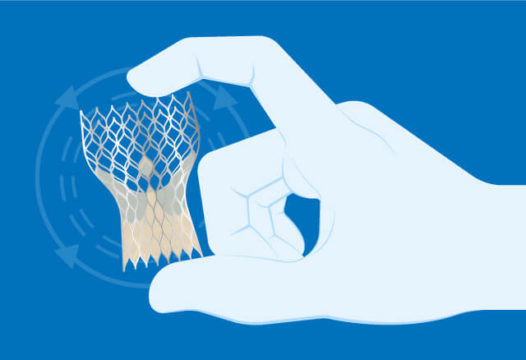TAVR has been shown beneficial in patients across the risk spectrum. The PARTNER 2 SAPIEN 3 (P2S3i) study on intermediate risk patients was the first to show TAVR superiority vs SAVR when using the transfemoral approach.

SAVR durability has been shown in different analysis but, except for a few reports, TAVR durability at long term remains largely untested. Namely, there is no information from large randomized studies.
P2S3i was analyzed comparing its outcomes vs. PARTNER 2 SAVR patients.
Primary end point was death or disabling stroke.
To account for differences between their populations, patients were matched using propensity score, leaving 783 patients in each group.
Mean patient age was 81, 57% were men, mortality STS score was 5.5%, 35.5% were diabetic, 93% hypertensive, 68% had CAD, 16% had a history of MI, 28% PCI, 26% CABG. 9.2% stroke, 20% had carotid lesions, 6% kidney failure, 28% COPD, 9% cardiomyopathies, and 35% atrial fibrillation.
AVA was 0.69 cm2, mean gradient 45 mmHg, ejection fraction 57% and mitral regurgitation 12%.
After 5 years, there were no significant differences in primary end point (40.2% for TAVR vs. 42.7% for SAVR; HR: 0.87; 95% CI: 0.74-1.03; P= 0.10). All-cause mortality was similar (39.2% vs. 41.4%; HR: 0.90; 95% CI: 0.76-1.06; P =0.21), but there was lower incidence of disabling stroke with TAVR (5.8% vs. 7.9%; HR: 0.66; 95% CI: 0.43-1.00; P = 0.0046). This difference was mainly driven by disabling stroke during the first year, with no significant differences thereafter. There were no differences in structural deterioration, bioprosthetic failure, or paravalvular leak, though there was more mild leak among TAVR patients. Aortic valve area was larger among TAVR patients (1.6 cm2 vs.1.4 cm2, p>0.0001), with no differences in mean gradient.
Read also: Is Edge-to-Edge Treatment with PASCAL Effective at 3 Years?
There were no differences in hospitalization rate or cardiovascular or all-cause death.
Conclusion
This analysis using propensity score in intermediate risk patients, at 5 years, found death and disabling stroke rates were similar between TAVR and SAVR patients. Structural deterioration in relation to hemodynamic change was similar, but paravalvular leak resulted more common after TAVR with SAPIEN 3. Further assessment of clinical differences and durability of bioprosthetic valves calls for long term followup.

Dr. Carlos Fava.
Member of the Editorial Board of SOLACI.org.
Original Title: Outcomes of SAPIEN 3 TranscatheterAortic Valve Replacement Compared With Surgical Valve Replacement in Intermediate-Risk Patients.
Reference: Mahesh V. Madhavan, et al. J Am Coll Cardiol 2023;82:109–123.
Subscribe to our weekly newsletter
Get the latest scientific articles on interventional cardiology





